A team comprising the New York architectural firms Dattner and Grimshaw, with Jonathan Rose Companies, the for-profit affordable housing developer, and Phipps Houses, New York City's oldest non-profit housing developer, won the competition. Their winning design combines standard construction methods with a sophisticated façade system, inventive apartment layouts, and extensive green elements.
Ascending the Green Way
Via Verde's dramatically stepped form, along with the sharp lines of its prefabricated façade, complement the range of building types in the area. The South Bronx has been a site of intense development for the last two decades, largely with new low- and middle-income housing, in efforts to revitalize a borough that was devastated by building fires and abandonment in the 1970s. The area known as Melrose Commons is once again a dense neighbourhood.
Rising south-to-north from three-story townhouses to a 20-story tower, Via Verde wraps around the edges of its narrow, triangular site, forming an intimate courtyard and maximizing sun exposure. The name Via Verde, or "Green Way," refers to the project's system of planted roofs. Starting at the courtyard amphitheatre, residents will climb to the roofs, spiraling up through plantings of conifers, an orchard, and resident gardening plots, finally arriving at a "fitness roof," with a covered terrace for exercise classes, which opens into an indoor fitness centre. Via Verde also incorporates a ground-floor health clinic and has become a test case for New York City's Active Design Guidelines, adopted in 2010, promoting healthier living through architectural features such as open stairs, presented as an alternative to the elevator. Via Verde's dual emphasis on resident health and architectural sustainability expands the concept of "green" building.
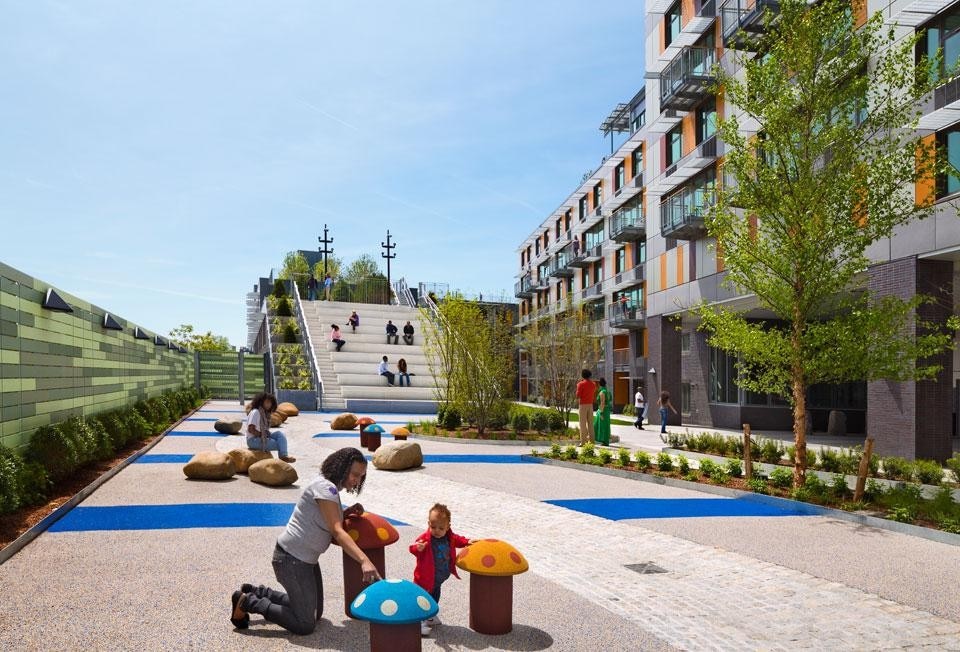
Despite its distinct design, however, Via Verde is in many ways a typical New York City affordable housing project. The building's block-and-plank structural system, used in all but the 20-story, cast-in-place concrete tower, is standard for this type of development. And while Via Verde did benefit from zoning waivers, allowing a slightly higher tower and narrower open spaces than as-of-right, the building is fully compliant with the 2008 New York City Building Code as well as the HPD design guidelines that govern minimum room sizes and access to light and air. Via Verde's waitlist — 7500 applicants for the 151 rental units — is unfortunately also typical, saying more about the lack of affordable housing in New York than it does about the specific project. Via Verde's ordinary qualities are some of its most encouraging; the fact that so many of its elements were standard makes the innovative features easier to replicate.
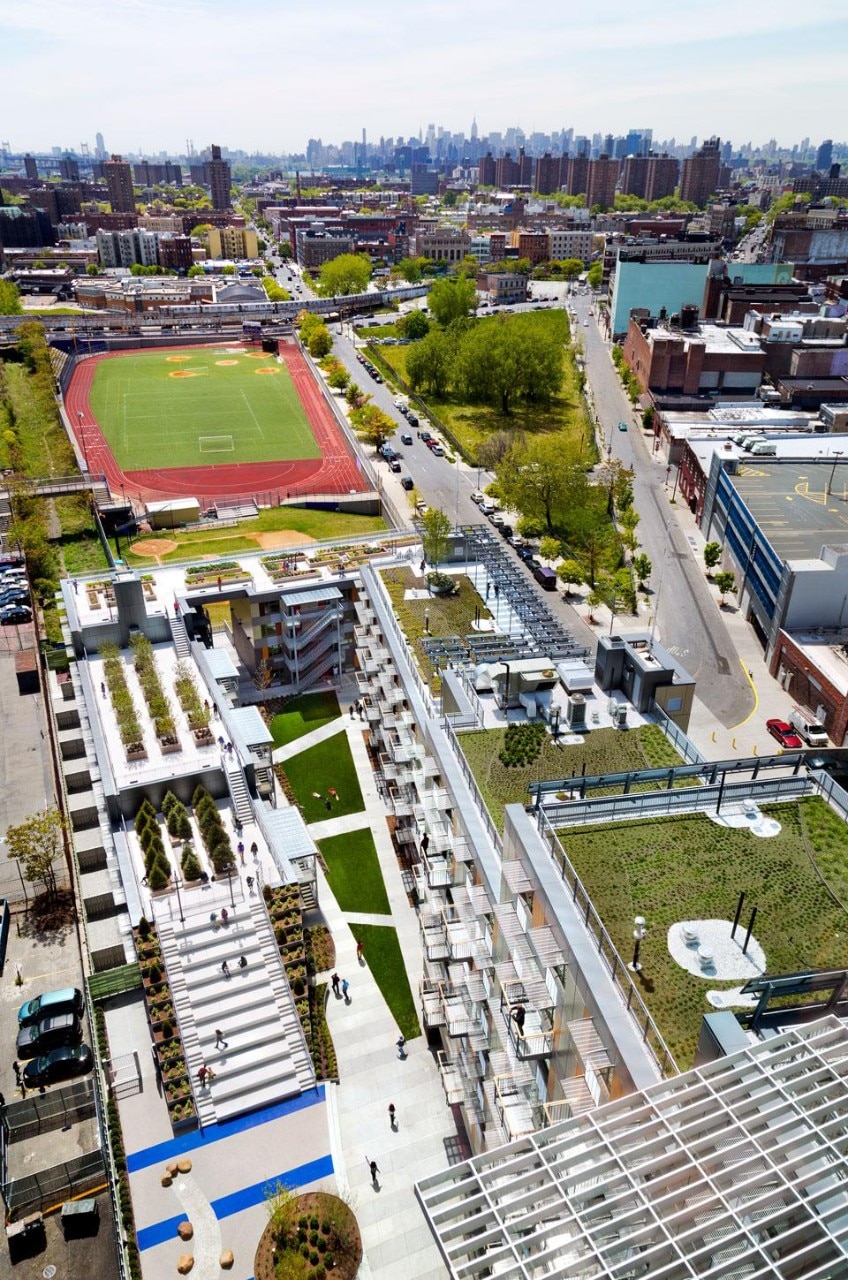
In addition to Via Verde's exceptional design, the project boasts quantifiable benefits in affordability and sustainability. Prices for the project's 151 rental apartments are set for households making 30 to 60 percent of the Area Median Income (AMI), which is currently between $24,000 and $48,000 annually for a family of four; the monthly rent for a two-bedroom unit is $942. The 71 co-ops are priced for those making 70 to 100 percent of the AMI, with the purchase cost for a two-bedroom apartment beginning at $146,000. The design team estimates that the building will be over 30 percent more energy efficient than standard housing developments.
The quality, however, does come at a cost. Via Verde's developers approximate that the $100 million project, at $2,600 per square metre, cost five percent more to construct than a typical affordable housing project would have, with cast-in-place tower construction and remediation of the brownfield site accounting for most of the extra expense. The building's architectural achievements were possible only because of extensive governmental support, not only through funding, but also in terms of regulatory exceptions: a mayoral override exempted the project from having to provide car parking, typically a major expense in housing development. As is the case for most affordable housing projects, several different government sources funded Via Verde, from federal low-income housing tax credits, to support from the Bronx Borough President's office, to funding from the New York State Energy Research and Development Authority. The project also benefited from a City-owned site, transferred to the development team at no cost. Governmental support for Via Verde, along with the dedication of the design-development team, spared the project from some of the "value engineering" that too-often dilutes great designs.
The comparably higher costs are the cause for some criticism. "You could make anything affordable with enough subsidies," said Jerilyn Perine, executive director of the Citizens Housing and Planning Council and former commissioner of HPD. "Via Verde is like the High Line. These things are great for what they are, but they are not good public policy models because they are too expensive to do again. The challenge of government is to spend the least and get the most." Other experts point to the fact that housing, inherently expensive to construct, must be publicly subsidized to remain affordable for residents. As New York City Department of Design and Construction Commissioner and NHNY juror David Burney put it recently, "Design is not the obstacle. It's the way we deliver housing that's the problem. The rest of the world does it with central government financing. If we can spend 10 billion a month on wars, we can get a little bit back and spend it on housing."
Via Verde's designers deviated from tried-and-true, efficient unit layouts, creating instead apartments that revive historical experiments in housing. The building's most innovative units are the two-story, two-bedroom apartments in the mid-rise section along Brook Avenue, inspired by Le Corbusier's Unité d'Habitation
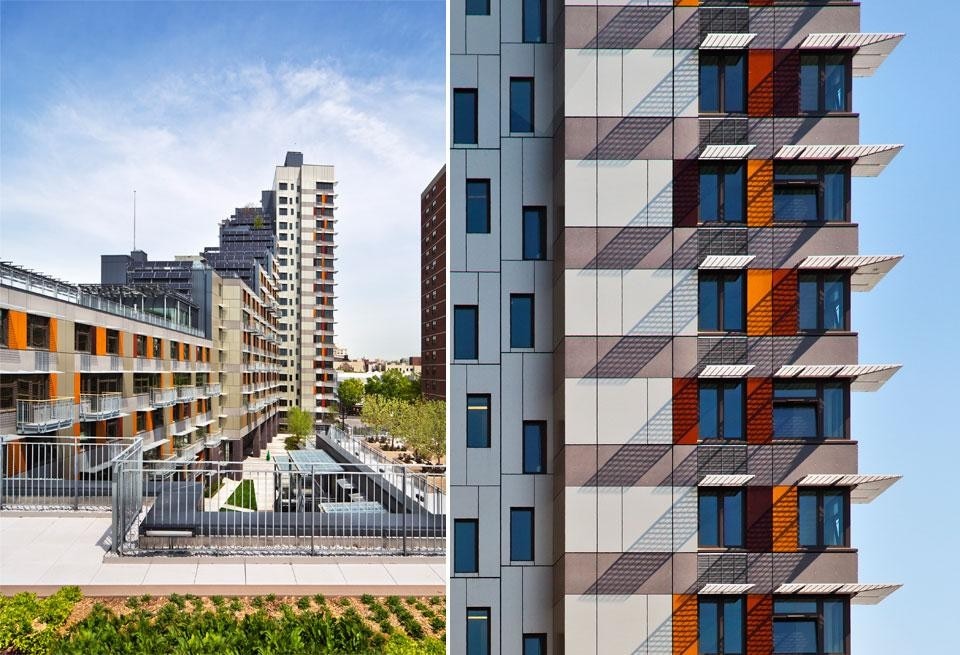
Via Verde emerged from a unique selection process: initiated and organized by the New Housing New York Steering Committee, an independent group of architects, developers, and City representatives, NHNY was an open, two-stage competition for architect-developer teams. Thirty-two teams from around the world submitted responses to the first-phase request for qualifications, of which five were awarded stipends and invited to submit full design and development proposals. NHNY attracted design-focused firms new to the field of low-income housing; Garneau told me that Grimshaw would likely never have taken on an affordable housing project, were it not for the competition's emphasis on design. The firm has since become more involved in housing.
An independent jury used weighted evaluation criteria, with 30% each for "innovative design" and "economic feasibility," 20% for "green building," and 10% each for "replicability" and "team experience," placing a much higher value on design than typical in affordable housing. Rick Bell, executive director of the AIA's New York Chapter, highlighted the importance of the "combination, from the outset, of the design and development teams sharing linked goals of building affordable housing that is emphatically green."
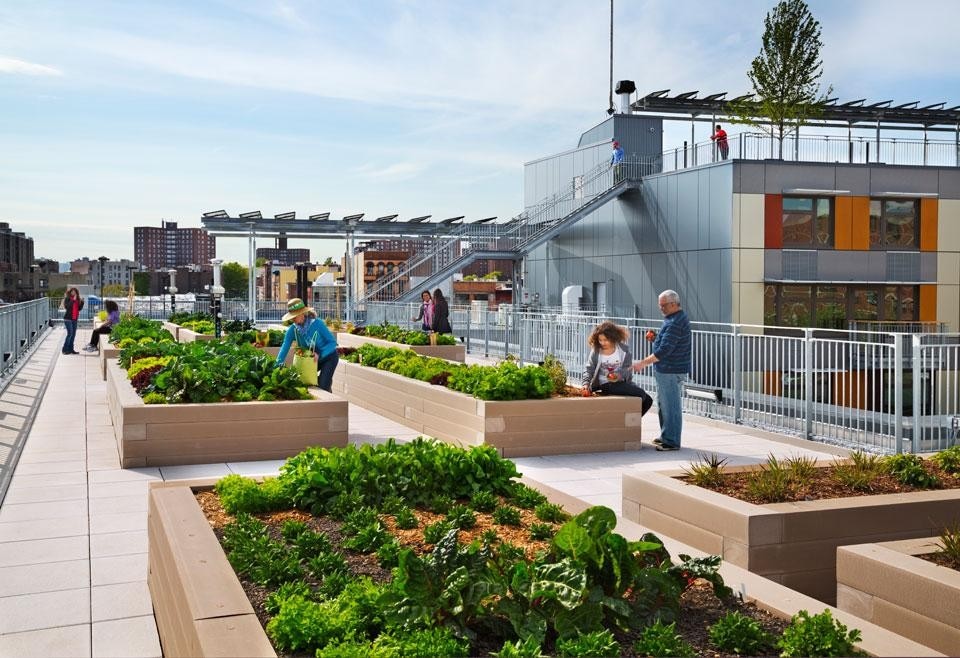
The design of Via Verde is so much a product of its challenging, irregularly shaped brownfield site that, as completion co-organizer and architect Mark Ginsberg put it, "We weren't creating a prototype that you could build on standard, 100-foot-deep [30 metre deep] lots all over the city." Project collaborators point to replicable lessons of Via Verde on small and large scales. Karen Hu of Phipps Houses reports that her organization is now taking green design more seriously in all of its projects, starting with "something as simple as a ceiling fan." Design aspects such as the relatively narrow width of Via Verde's floor-through apartments, allowing for cross-ventilation, have also caught the attention of New York City's Department of City Planning.
Via Verde marks a turning point in New York City housing. With the cost of living continuing to rise and once-plentiful City-owned sites increasingly rare, the need for well-designed housing is growing. Via Verde has achieved one of the most difficult feats in urban housing, producing both a sense of community and access to open space at a high density. The project sets a precedent for what is possible with investment in housing and design.Karen Kubey
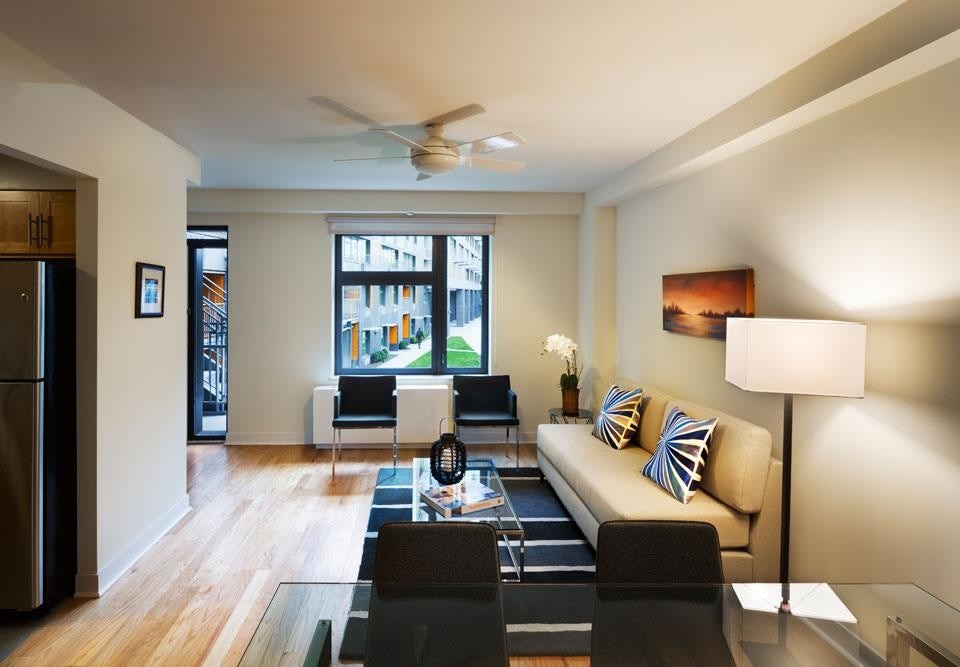
Phipps Houses: Adam Weinstein, Eliza Datta, Michael Wadman, Karen Hu, Rich Hill, Carmelo Torres
Jonathan Rose Companies: Jonathan F.P. Rose, Paul Freitag, Roger Gore, Whitney Foutz, Ari Alowan Goldstein, Monica Wong
Dattner Architects: Richard Dattner, William Stein, Adam Watson, Steven Frankel, Venesa Alicea, Joon Cho, Eugene Kwak
Grimshaw Architects: Vincent Chang, Nikolas Dando-Haenisch, Robert Garneau, Virginia Little, Juan Porral, Chung Yeon Won, Eric Johnson, Aaron Hockett, Christine Caine
Lee Weintraub Landscape Architecture: Lee Weintraub, Giovanni Diaz, Anderson Demoraes
Consultants: Robert Silman Associates, P.C., Ettinger Engineering Associates, Front Façade Consultant, Pillori Associates, Langan Engineering, Domingo Gonzalez Associates, Robert Schwartz Associates, William Vitacco Associates, Association for Energy Affordability, Bright Power, Buro Happold Consulting Engineers, P.C, DomeTech, Inc.
General Contractor: Lettire Construction
A version of this article first appeared in German in Bauwelt 10/2012.
Karen Kubey is an architect based in New York specializing in housing design and research. She was the founding co-chair of the New Housing New York Steering Committee and is currently producing an exhibition on low-rise, high-density housing titled Suburban Alternatives.
Lance Jay Brown, Mark Ginsberg, and Tara Siegel, architects and co-organizers of the New Housing New York competition, have authored a book documenting the competition process and results: New Housing New York: Legacy Project. Best Practices in Affordable, Sustainable, Replicable Housing Design, to be published later this year by Oscar Riera Ojeda and distributed internationally.


